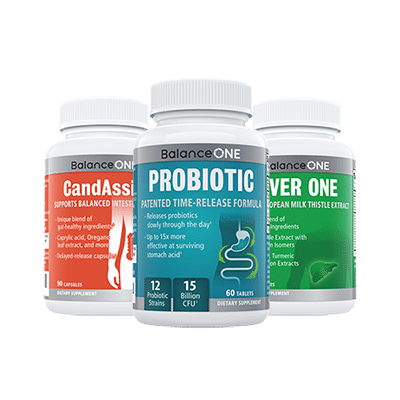Why Does Yogurt Contain Sugar?

Yogurt is one of the healthiest dairy foods you can find in the supermarket. It’s not just a delicious snack or dessert and a great source of calcium; most importantly, it’s easy to digest and contains probiotic bacteria that help to keep your gut microbiome in balance.
However, that’s not always true! If you look in the dairy section of any supermarket, you’ll find dozens of brands of yogurt that contain high amounts of added sugars and flavorings. In fact, many single-serving yogurts can contain as much sugar as a candy bar! This may make the product more tasty – but it certainly doesn’t make it good for you.
High quality yogurt can be included in a healthy, low-sugar diet. It’s beneficial for kids and adults alike, and it can provide the beneficial bacteria that your body needs to fight off illnesses. But if you wish to purchase ready-made yogurt, it’s important to know what to look for on the product label.
Table Of Contents
Why Does Your Yogurt Contain Sugar?
There’s a big difference between added sugar and the natural sugar present in yogurt. Milk contains a natural sugar called lactose, which is a very necessary part of the fermentation process.
Yogurt contains a variety of natural bacteria, known as ‘starter cultures’. These include Lactobacillus bulgaricus and Streptococcus thermophilus.
Those starter cultures work by fermenting the milk sugar – lactose – in order to produce lactic acid. When lactic acid increases, the pH of the milk decreases, causing the milk to become thick and clotted. This is how it turns into yogurt. The fermentation process also produces yogurt’s unique, tangy flavor. (1)
When lactose is fermented, it forms galactose and glucose. These are the sugars you’ll see on the nutritional label of a yogurt product. However, the glucose is mostly converted to lactic acid. The longer the fermentation process, the less glucose will be present in the final product.
Another benefit of this lower lactose content is that yogurt is often easier for people to digest, when compared to milk. Because the bacteria have partially broken down the milk, even those who are lactose-intolerant are usually able to eat yogurt without problems.
Why Are Added Sugars Bad?
Sugar may improve the taste of a product, but it almost never improves your health! Eating excess added sugar has a host of negative effects on your health. Sugar is also the primary fuel of disease-causing pathogenic yeast and bacteria that crowd out the ‘friendly’ bacteria in your intestinal tract. To maintain a healthy gut and optimize your overall health, you must limit your sugar intake.
Even if a store-bought yogurt claims to contain lots of probiotic bacteria, those added sugars will likely cancel those benefits out. The negative effects from added sugar will likely outweigh any probiotic benefits you may receive from the sweetened yogurt.
What’s more, many store-bought yogurts contain not only added sugars but artificial colors, flavors, artificial sweeteners, and even artificial thickeners. In some products, GMO sugar variants are used to sweeten the taste. These often include genetically engineered (GE) beet sugar and corn syrup (high fructose corn syrup).
Which Type Of Yogurt Should You Buy?
The many different yogurt products in your supermarket can make it difficult to know which one is actually good for you. In most cases, simple is best: that is, the fewest ingredients! But here’s a basic checklist of what to look for:
Probiotic yogurt with live cultures
As mentioned above, the FDA requires yogurt to include L. bulgaricus and S. thermophilus. Check for these first. Some brands will mention that they contain ‘live and active cultures’ and a certification from the National Yogurt Association (NYA). This will guarantee that the product has at least 100 million cultures per gram at the time it was manufactured.
Brands may also add other strains of live and active cultures to their products. The bacterial cultures Lactobacillus bulgaricus and Streptococcus thermophilus are required by law to be present in yogurt. Other cultures, such as Lactobacillus acidophilus, Lactobacillus casei, and Bifidobacteria may be added later for their health benefits.
Studies have shown that the bacterial strains in yogurt have numerous benefits for your health. Yogurt can help stimulate the immune system of your gut, boosting your defenses against pathogenic yeast and bacteria. It’s also been found to improve lactose digestion in those with lactose intolerance, while also enhancing overall digestion and intestinal transit time.
Note that not all of the probiotic bacteria in yogurt will actually reach your gut. Unlike high-quality probiotic supplements that use time-release tablets, most of the bacteria will be destroyed by stomach acid. However, enough of those bacteria will survive the journey to your gut to make a difference. Also remember that yogurt is a nutritious, easy-to-digest food that is generally beneficial for your gut health. (2)
No added sugars
Choose unsweetened yogurt where possible. That means no added sugar and no added flavorings – including fruits.
Plain, unsweetened, unflavored yogurt is usually the only type with no added sugar. As boring as this sounds, it’s much better for you! Unsweetened yogurts include regular yogurt, Greek yogurt, non-fat, and full fat. Greek yogurt has a wonderfully thick texture and works well as a healthy dessert.
Remember: if you see sugar on the nutritional label, it’s not necessarily ‘added sugar’. Sugar in plain yogurt is the naturally-occurring milk sugar called lactose, which is required for starting the fermentation process.
How To Spot Hidden Sugars
Unfortunately, sugar isn’t always easy to identify on a nutritional label. It can be listed under a wide variety of names that may not even include the word ‘sugar’! So, how do you know what to look for?
The first clue is a name that ends in “ose” – such as maltose, glucose or sucrose.
Other names for sugar include high fructose corn syrup (HFCS), molasses, cane sugar, corn sweetener, raw sugar, syrup, honey or fruit juice concentrates.
Some commonly-used sugars from fruit include date sugar, grape juice concentrate, grape sugar, and pear juice concentrate. (3)
The typical sugar content for a store-bought unsweetened, plain Greek yogurt can be as little as 5 grams. This is naturally-occurring sugar, not the added kind.
Why Is It Better To Make Your Own Yogurt?
Store-bought yogurt is convenient and readily available. However, the quality of a particular product depends largely on the milk that was used and the manufacturing process. As a result, the yogurt may harbour some healthy benefits, or none at all.
Studies have shown that the milk used in the making of most commercial yogurts is often poor quality. The milk is usually from Holstein Friesian cows which are raised on concentrated animal feeding operations (CAFOs).
Making your own yogurt is easy – and you’ll avoid all the nasties of store-bought yogurt!
Best of all, you’re in control of the fermentation process. Because the bacteria consume the natural sugar (lactose) in the milk during the fermentation process, you can ferment the yogurt for longer to reduce the sugar content. For this reason, homemade yogurt is often tolerated better by people who are lactose intolerant.
Store-bought yogurt, on the other hand, is often fermented for a short period of time at a higher temperature. Some yogurts are even pasteurized to make them shelf-stable. However, this process kills off the beneficial bacteria, which means they contain few or no active cultures by the time you buy them.
Making your own yogurt means you’ll know exactly what ingredients are going into it. You can use a high-quality organic, pasture-raised milk to maximize the nutritional benefits.
Healthy Recipes That Use Yogurt
Here’s a selection of healthy, low-sugar recipes that use yogurt. Enjoy!
- Apple & Walnut Yogurt Parfait
- Rhubarb Muffins
- Vegan Cauliflower Curry
- Fish Tacos With Lime Crema
- Mashed Cauliflower with Rosemary
- Moroccan Stir Fry
- Mediterranean Zucchini Dip
- Bircher Muesli
- Southwestern Soufflé

3-Month Candida Elimination Kit Start Your 3-month Candida Cleanse
This Candida Kit contains all the supplements recommended on the Candida Diet:
- LIVER ONE to process and remove the toxins created by Candida.
- CANDASSIST to inhibit and weaken the Candida colonies in your gut.
- PROBIOTIC to replace the Candida yeast with probiotic bacteria.
Plus... the CANDIDA DIET RECIPE BOOK with 50+ low-sugar recipes

Leave a Reply